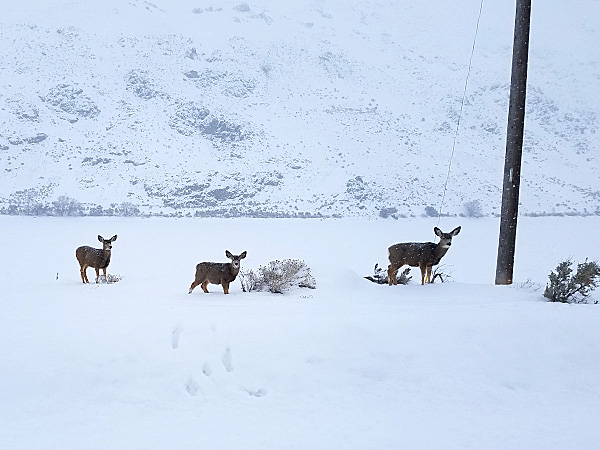With snow exceeding 18 inches in depth in some areas paired with colder than normal temperatures, it is no secret this past winter was hard on wildlife in the west. Reaching at least the freezing mark for 28 consecutive days, the conditions took a particularly hard toll on the mule deer in the eastern region of the state of Oregon.
District Wildlife Biologist Brian Ratliff compared this year’s winter to 1993-94. “It came early, it lasted long and the snow kept accumulating,” he said. “We have had winters like this historically but not in the last 10 years.”
Anxious to get out and assess the damage, spring aerial surveys were recently completed to dismal results. Where surveys traditionally would uncover 30 or more fawns per 100 adults, officials found an average of 11 fawns per 100 adults in the area, with some units being as low as 8 fawns per 100 adults.
While the pronghorn in the area are also a cause for concern, Ratliff went on to state that the elk in region thankfully had not succumbed to the same fate.
“We saw some elk mortality, as we always do, but it was not significant,” Ratliff explained. “Due to their size, elk can generate more body heat at less energetic cost and they can get thru crustier snow easier than smaller ungulates like deer and pronghorn.”
In an effort to help populations get back to sustainable levels, the Oregon Department of Fish and Wildlife released its 2017 emergency tag reductions last week. The reductions will see both pronghorn and mule deer tags in Baker County reduced by 50 percent; even canceling a pair of doe hunts on agricultural lands.
Additionally, Union County tags will be reduced by 35 percent, Malheur County by 40 percent in the Beulah Unit and 25 percent in the Owyhee Unit.
The department is optimistic that paired with the reductions in 2017 hunting tags, the improved range conditions from the melt this year should aid in fawn production and hopefully benefit mule deer populations in the long run.




